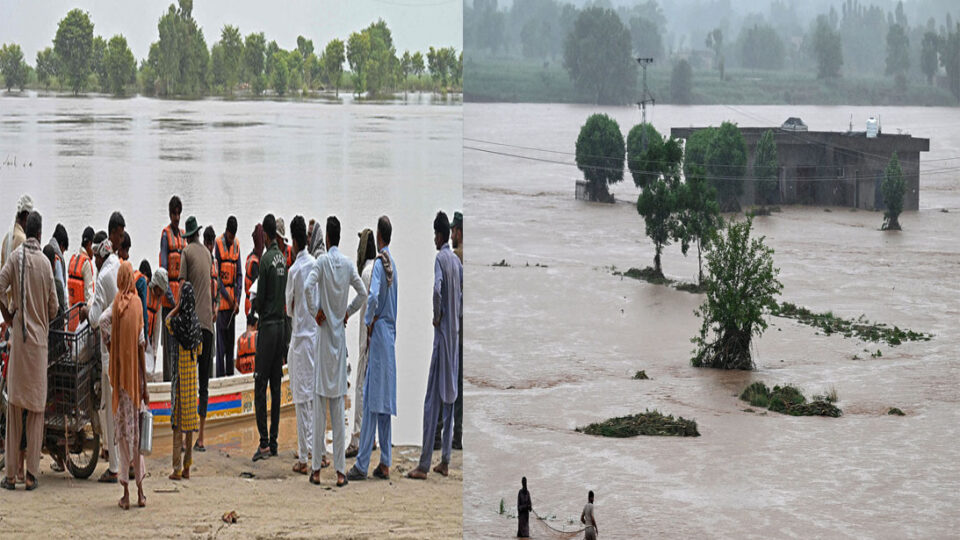Floods Impact Hundreds of Villages Across Punjab as Water Levels Rise in Major Rivers
LAHORE: Ongoing monsoon rains and glacial melting have led to flooding across several regions of Punjab, with water levels rising in major rivers including the Ravi, Sutlej, Chenab, Jhelum, and Indus. As a result, hundreds of villages have been inundated, prompting mass evacuations and widespread damage to crops and homes.
Widespread Displacement and Crop Damage
The worst-affected areas include Muzaffargarh, Dera Ghazi Khan, Rahim Yar Khan, and Jhang, where rising water levels have displaced thousands of residents. Locals from low-lying “katcha” areas are moving to safer ground, bringing their livestock along.
In Jhang district alone, more than 20 villages have been impacted, and hundreds of acres of standing crops have been destroyed due to rising water levels in the Jhelum River.
Current River Conditions and Flow Rates
According to the Pakistan Meteorological Department (PMD), several rivers are experiencing low to medium flood levels:
-
Indus River is in low flood at Tarbela, Kalabagh, Chashma, Taunsa, and Guddu
-
Chenab River is in low flood at Khanki
-
Sutlej River is facing low-level flooding at Sulemanki
PMD reports current water flows as:
-
Khanki (Chenab): Inflow at 120,000 cusecs, outflow at 116,000 cusecs
-
Kalabagh (Indus): Inflow at 332,000 cusecs, outflow at 324,000 cusecs
-
Taunsa: Inflow at 363,000 cusecs, outflow at 357,000 cusecs
-
Tarbela: Water flow at 350,000 cusecs
-
Chashma: Inflow at 340,000, outflow at 320,000 cusecs
Flood Alerts and Evacuation Efforts Underway
The Provincial Disaster Management Authority (PDMA) has issued low to medium flood alerts for several rivers, including the Chenab and Jhelum, warning that flood risks are high between July 22 and 24.
PDMA Director General Irfan Ali Kathia has urged district officials to remain vigilant. Alerts have been sent to authorities in major divisions such as Rawalpindi, Gujranwala, Sargodha, Faisalabad, Multan, and Dera Ghazi Khan.
An urban flood alert has also been issued for Rawalpindi and Gujranwala due to heavy rainfall and saturated drainage systems.
Authorities Mobilized for Relief and Rescue
In response, the PDMA has mobilized emergency services, including Rescue 1122, Civil Defense, health, irrigation, and local government departments, to ensure rapid rescue and relief operations. Emergency control rooms are operating 24/7, and relief camps have been established in vulnerable districts.
The Mangla Dam is currently at 50% capacity, while Tarbela Dam is at 79%, helping absorb some of the excess rainfall. Authorities are also monitoring the situation at Indian dams on the Sutlej, Ravi, and Beas rivers, which could impact downstream water flows.
Public Advised to Stay Alert
Residents in flood-prone areas are strongly advised to follow local government guidance and evacuate when asked. The PDMA continues to monitor weather conditions and river flows closely and urges the public to avoid unnecessary travel, especially near riverbanks and low-lying areas.

